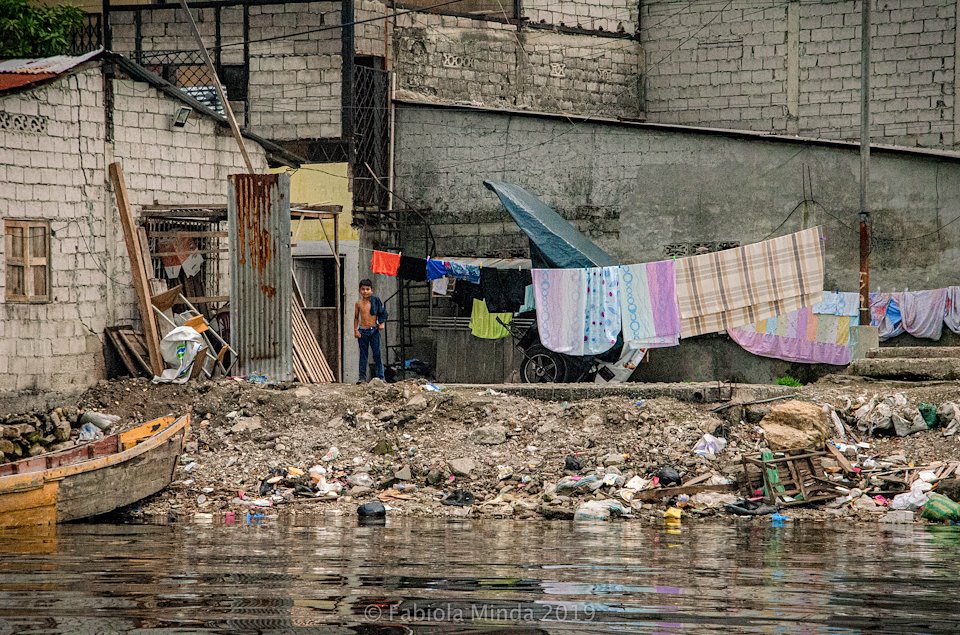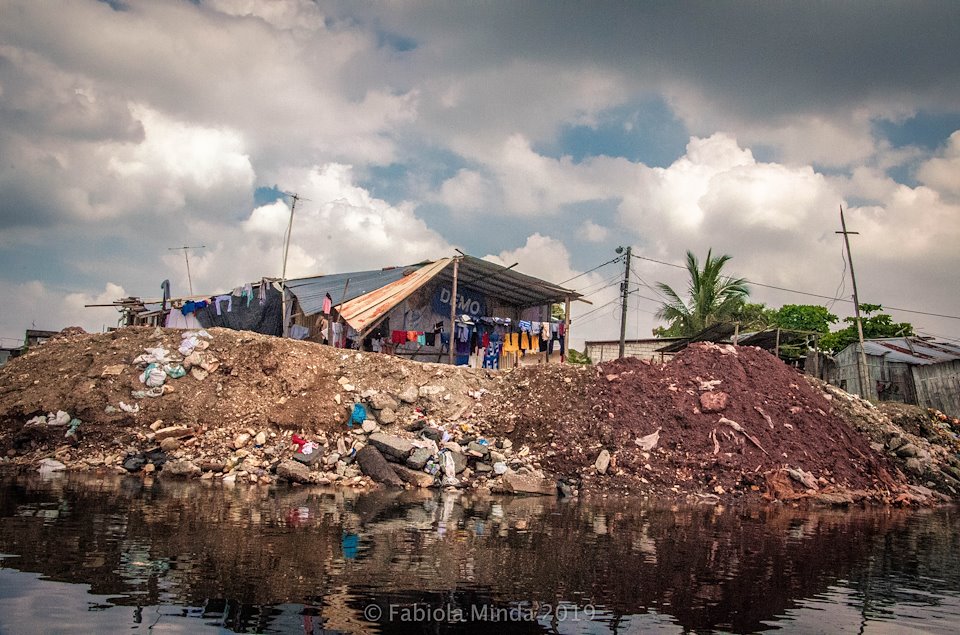
‘My Backyard’
A young boy stands under the laundry of his home, and next to the waste that the estuary displays. Perhaps the waste was brought by the water or created by his family or neighbors; or all of them.
©Fabiola Minda All rights reserved

‘Plastic Forever’
A woman rests at her window next to a pile of plastic garbage at the Salado estuary. Most of the single-use plastic that we have acquired in our lives still exists somewhere, in a landfill, in the ocean or a river etc.
©Fabiola Minda All rights reserved

‘The Plastic Garden’
Terrestrial microplastic pollution is much higher than marine microplastic pollution – estimated at four to 23 times higher, depending on the environment.
©Fabiola Minda All rights reserved

‘Chaos’
A dog and a cat stand on waste abandoned at the banks of the estuary, next to a home.
©Fabiola Minda All rights reserved